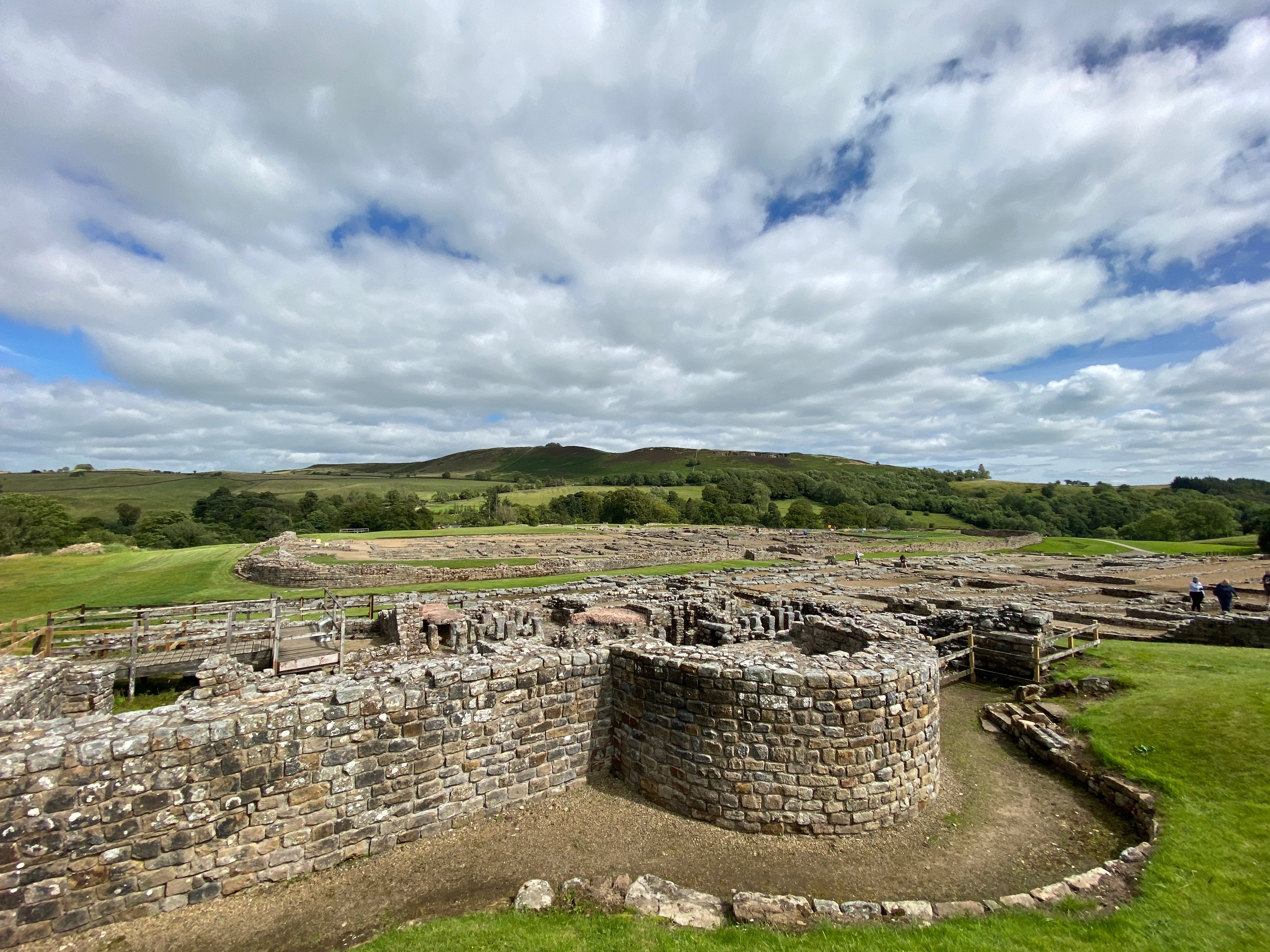Amateur archaeologists discover rare winged goddess sculpture near Sycamore Gap
Symbolic find believed to signify the end of an Ancient Roman war

An ancient statue depicting the Roman goddess of victory has been unearthed at Hadrian’s Wall by amateur archaeologists.
The symbolic find of the winged goddess was discovered in a reused pile of rubble above infantry barracks at Vindolanda, a fort just south of the Sycamore Gap.
It is believed the sandstone relief had been used to signify the end of an ancient Roman war.
Veteran married volunteers Jim and Dilys Quinlan, from Merseyside, made the discovery on 1 May while taking part in their 21st year on the site’s excavation programme.
Ms Quinlan told The Guardian: “We’ve spent the vast majority of our annual leave at Vindolanda over the years. As veteran diggers, it is without doubt the most wonderful thing we’ve ever done and, importantly, it’s something we do as a couple.
“It’s the best form of relaxation that we know of. We eat well, sleep well, we’re in good company and there’s always more to learn. What more could you ask for?”
-The-Vindolanda-Turst.jpeg)
Goddess Victory, known in Latin as Victoria, was the personification of victory in Roman religion and mythology.
She was the counterpart of the Greek goddess Nike and was highly revered by the ancient Romans, during times of war she was often credited for battlefield success, according to the Vindolanda Trust.
Dr Andrew Birley, the director of excavations for the Vindolanda Trust said: “Finds like this are increasingly rare these days from Roman Britain, but the beautifully carved figure vividly reminds us that Roman forts were not simply utilitarian, they had grandeur and of course the symbolism was a vital part of the culture here for the soldiers almost 2,000 years ago.
“I am also delighted for Jim and Dilys for their discovery. It is just reward for their 21 years of hard work and dedication to this site.”
The stone is thought to be one side of a much larger relief which would have framed an inscription in its centre, and is “highly likely” to have originally been brightly painted.
The Trust’s curator Barbara Birley said: “We will be working with our specialists to see if any traces of the pigment remain, so for now the relief is being stored unwashed ready for that further analysis.”

Vindolanda was first built by the Roman army, before construction had even begun on the 73-mile-long Hadrian’s Wall, to guard the wild north-west frontier of the Roman Empire. It became an important construction and garrison base for the wall and was demolished and rebuilt at least nine times.
The site was under Roman occupation between 85 AD and 370 AD, and today it is an active archaeology site providing an insight into the lives of people living and working near Hadrian's Wall nearly 2,000 years ago.
These particular barracks at Vindolanda were built at the end of a tumultuous time for the Romans in Britain, in AD 213, just after the end of the Severan wars.
The barracks were once adorned with a large ornamental arch and gate, precisely the location where an inscription may have been present.
This artefact will go on public display in early 2026 at the Vindolanda museum as part of its Recent Finds exhibition.
Join our commenting forum
Join thought-provoking conversations, follow other Independent readers and see their replies
Comments